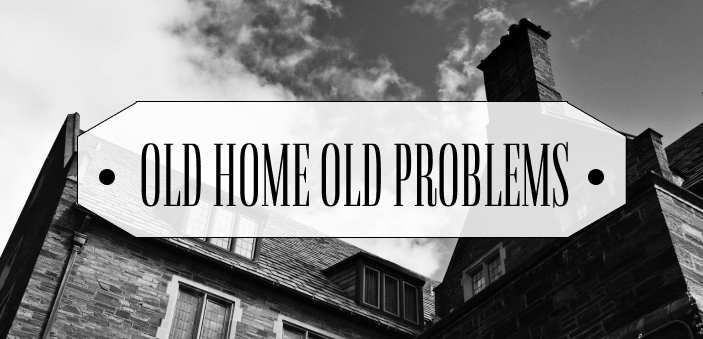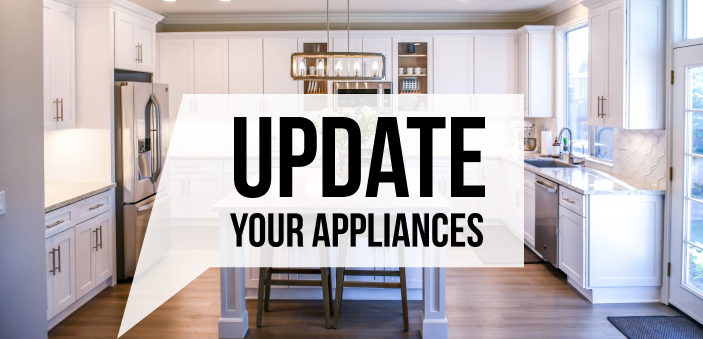Common Problems with Old Houses

There’s something distinctly human about wanting to live in an older house. It connects us with history in a way that documentaries and textbooks simply can’t. To experience life through the lens of a home is the most powerful and effective way to gain perspective about the way life was, and how it’s changed.
“Old home” is an umbrella term that encompasses a lot of types of houses. When someone mentions that they live in an old house, they might mean one that was built 200 years ago with vast historical significance. They could also mean their house was built in 2004 and doesn’t have Smart Home capabilities.
The definition of an old home depends on the region as well. In the northeast, old homes are smaller, winter-protected, and may have antique appliances. In the west, an old home could be a dusty homestead with a massive ranch.
We’re going to focus on old houses in America, but it’s worth noting that most things in America are very new and shiny compared to things in Europe. In England, it’s not uncommon to live in a home that was built in the 1800s. A regular person can live in a house that is considered antique by American age standards, without thinking much of it.
Regardless of time period or location, all older homes do share one thing in common: age-related issues. That’s what we’re going to explore today – and we’ll break it down by time period.
Houses Built Between 1978 and 2008
Many houses that are currently used in America fall into this time period, so we have to discuss it. Luckily, these houses don’t have too many expensive age-related issues.
That’s because the most common problems with these homes aren’t the houses themselves, but rather their appliances. Washers, dryers, dishwashers and HVAC technology have come a long way since 2008, so if your house still has the original appliances, it’s probably time to update them.

This will not only make your life substantially better (no more damp laundry out of the dryer or dirty forks after a dishwasher cycle), but it will also improve your home’s resale value. We recommend starting with the kitchen. Market data shows that upgrading kitchen appliances is one of the only renovations that actually make a nice profit.
Another problem with pre-2008 homes is termite damage. Depending on your area, termites can totally degrade a house in just a few years. It would be worth your time and money to get an inspection done and hire an exterminator to deal with any termites. While it will cost you a grand or two now, you’ll save tens of thousands later on.
Houses Built Before 1978
The biggest reason houses built before 1978 are in their own category is a man named Phillip J. Landrigan.
Landrigan is an epidemiologist who is credited with the most impactful study on the effects of lead in paint and gasoline ever conducted.
As early as 1904, reports surfaced of the adverse effects of lead on the brain, especially in developing children. Exposure to lead has killed thousands of people.
Some of the health effects of lead include hearing loss, frequent vomiting, constant headaches, severe abdominal pain, and death. In children, lead exposure can cause severe learning disabilities and slowed physical development.
Thanks to the tireless work of Landrigan, along with his dedication to policy change, the United States government banned all manufacture and use of lead-based house paint in 1978. Since then, the vast majority of pre-1978 homes have been renovated, and their lead-based paint removed.
It’s unfortunate, however, that lead based paint was ever used at all. Beyond all the death and suffering it caused, lead-based paint is still affecting lives financially to this day. If you bought a house that was built before ’78, you know just how expensive it can be to fix it.
Houses Built Before 1945
You’ve probably heard of the 80/20 rule. The most common application is the saying “the last 20% of a project takes 80% of the time.”
However, the rule can also be applied to buying an old house. The oldest 20% of houses contain 80% of the problems.
If you have a house that was built any time before 1945, there can be many major problems you’ll have to contend with.
The first, and most severe, is foundation damage. Over many decades, the soil underneath your home can begin to shift and settle in ways that disrupt structural integrity. If you live in an area with a lot of rain, this process is accelerated. Living in a house with many surrounding trees can also speed up the degradation, as roots can grow underneath your house, pushing soil as they spread.
Fixing one foundation crack is not a huge deal. Often, it only costs a few hundred dollars. But if your home is over 70 or 80 years old, there’s a good chance that cracks are just a symptom of a much larger problem.

Have a professional inspect your foundation and see if there is an impending foundation disaster. If there is, you may be looking at invoices in the neighborhood tens of thousands of dollars. If you live in an area with a lot of earthquakes, you’ll need to spend extra on anchors that make your house more stable during a shake.
Although the costs are very high, revamping your foundation is a great way to make sure that your beautiful old home lasts another 80 years.
Another huge problem with very old houses is unsafe electrical systems. New houses are built from the ground up with modern electronic equipment, and constructed with materials that help reduce the chances of electrical fires.
Old houses, by contrast, are often made of wood, which dries out and becomes very easy to burn over time. Combine this with a haphazard electrical system installation, or outdated wiring and outlets, and it can spell disaster. Commit some time and money to getting your electrical system inspected and, if necessary, fixed. It can save not only a TON of money, but also your life.
One of the most common problems in any home, no matter how old, is the AC system. Because they’re so complicated and rely on a good amount of moving parts and fluids, they tend to break down a lot.
If you own an old house, the best thing you can do for your HVAC system is ensure you’re changing out your air conditioner’s air filters at least every three months. Filter King's online store has any size you need, and will deliver it to your home within a few days. You can even set up a subscription to make sure you never forget another change.

